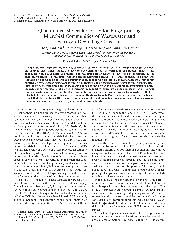摘要
A quantitative fingerprinting method, called the real-time terminal restriction fragment length polymorphism (real-time-t-RFLP) assay, was developed for simultaneous determination of microbial diversity and abundance within a complex community. The real-time-t-RFLP assay was developed by incorporating the quantitative feature of real-time PCR and the fingerprinting feature of t-RFLP analysis. The assay was validated by using a model microbial community containing three pure strains, an Escherichia coli strain (gram negative), a Pseudomonas fluorescens strain (gram negative), and a Bacillus thuringiensis strain (gram positive). Subsequently, the reall-time-t-RFLP assay was applied to and proven to be useful for environmental samples; the richness and abundance of species in microbial communities (expressed as the number of 16S rRNA gene copies of each ribotype per milliliter) of wastewater and estrogen-degrading consortia (enriched with 17 alpha-estradiol, 17 beta-estradiol, or estrone) were successfully characterized. The results of this study strongly suggested that the real-time-t-RFLP assay can be a powerful molecular tool for gaining insight into microbial communities in various engineered systems and natural habitats.
- 出版日期2005-3
